Health Insurance
Nearly 30% of Adults Have Seen a Therapist During the Pandemic, While Others Turn to Social Media and Mobile Apps for Help
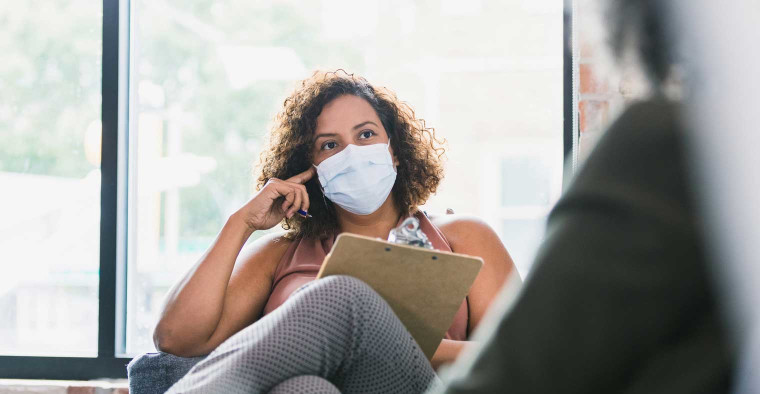
From feeling lonely or depressed to losing a job, the coronavirus pandemic has added a variety of stressors and emotions to nearly every aspect of life.
With this, people are looking for ways to cope. According to ValuePenguin’s latest survey of more than 1,300 U.S. adults, 1 in 5 have sought therapy related to pandemic anxiety or stress.
And they’re seeking therapy in a variety of ways, with 30% turning to mental health apps. This opens up new options and allows for even more accessibility.
Key findings
- Nearly 30% of Americans have seen a therapist during the coronavirus pandemic, and 86% say it’s helped them cope. Those most likely to seek help include victims of layoffs or furloughs (46%), Gen Zers (39%) and millennials (37%), and men (34%).
- 47% of men say the pandemic has caused them to be more willing to seek out mental health help than they have been in the past. Overall, 39% of Americans agreed.
- Americans — especially Gen Zers and millennials — are turning to social media and mobile apps for mental health resources during the coronavirus pandemic. 36% of consumers have accessed mental health resources on social media, including YouTube (18%) and TikTok (11%), while 30% have used apps for meditation and counseling.
- 35% of adults who haven’t seen a therapist during the pandemic say there’s at least one barrier preventing them from doing so, most notably being unable to afford copays (13%).
- 1 in 4 Americans have opted to pay out of pocket to see a therapist outside their insurance network rather than find an in-network provider.
Therapy has continued as a source of comfort for Americans amid the pandemic, with nearly 30% saying they’ve seen a therapist during the crisis (and 19% are considering it)
Seven percent of Americans are worried that other people in their life will judge them if they visit a therapist, which is worrisome. But 39% of adults are more willing to see a therapist and seek out mental health help now compared to in the past. This is evident in the nearly 30% of adults who’ve seen a therapist — virtually or in person — during the pandemic.
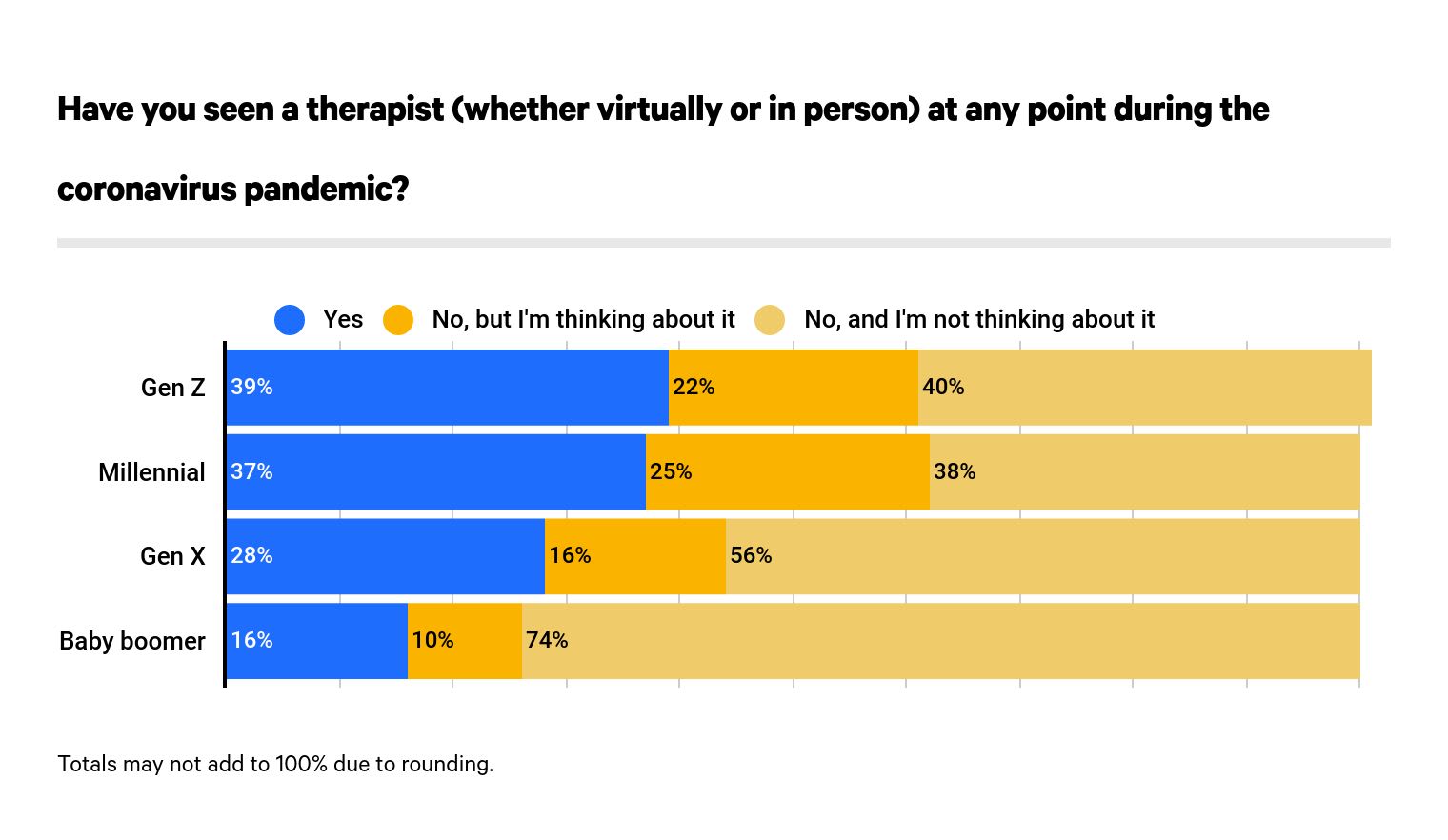
Younger generations were more likely to seek help through a therapist — 39% of Gen Zers and 37% of millennials, compared with 28% of Gen Xers and 16% of baby boomers. And men (34%) were more likely than women (24%) to see a therapist during these troubling times.
Additionally, those who were laid off or furloughed during the pandemic were more than twice as likely to have seen a therapist during this period than those whose income wasn’t impacted.
Many sought help due to the pandemic, but others turned to therapy for a variety of reasons
Nearly four in 10 respondents (38%) said they’d been going to therapy before the pandemic, meaning a majority (62%) only just turned to therapy within the past year. Specifically, 20% of respondents cited that pandemic-induced stress or anxiety was the main reason they turned to therapy. Other reasons included:
- Feeling overwhelmed (9%)
- Dealing with grief (9%)
- Struggling with substance abuse (6%)
- Coping with job loss (6%)
- Feeling lonely (6%)
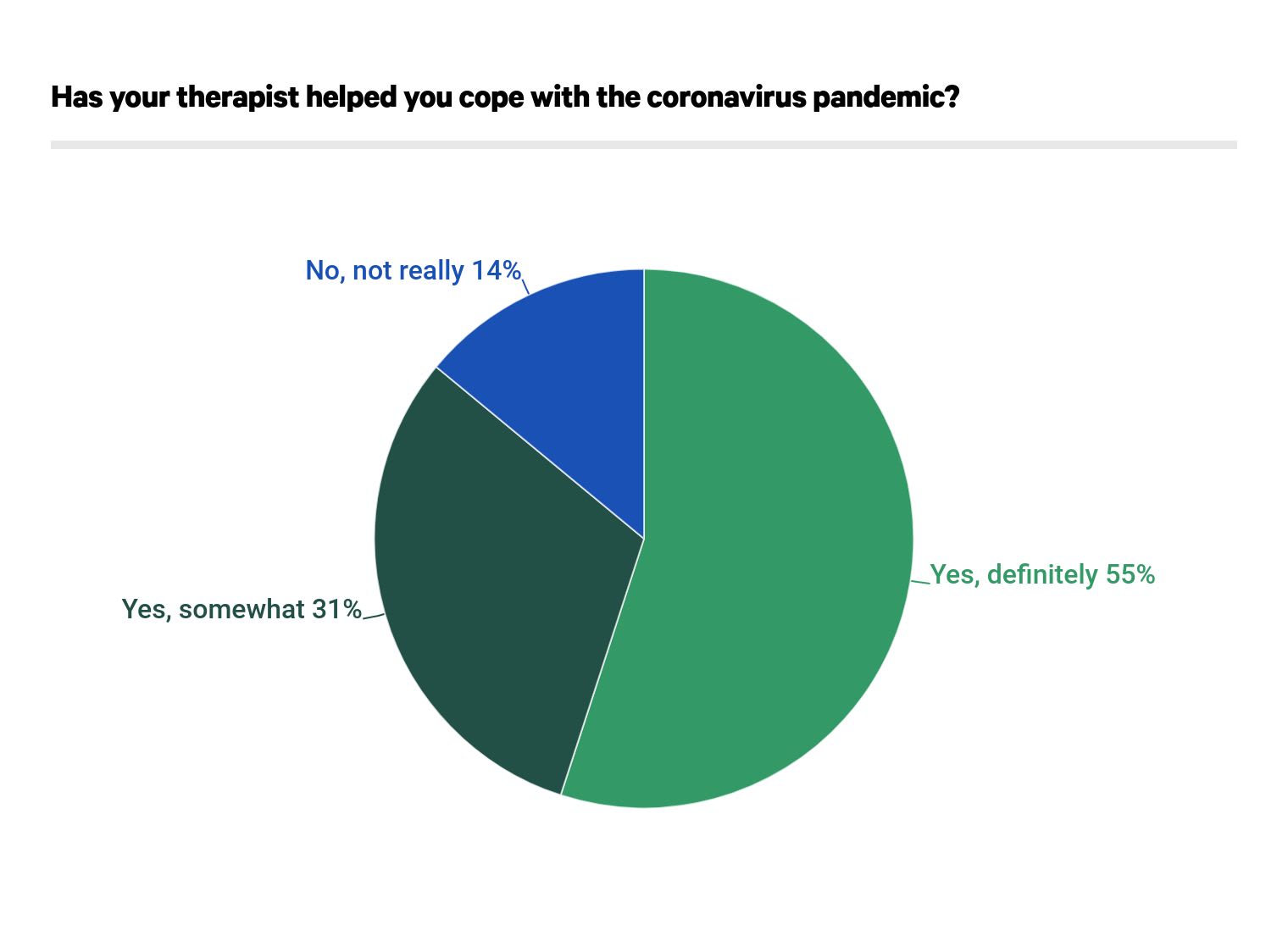
Our survey respondents found therapy to be effective, as 86% said it helped them cope with the pandemic in some form.
While the most common reason for seeking therapy — anxiety/stress — was nearly the same for both men (21%) and women (20%), there were wider differences among other reasons. For example, men (8%) were nearly three times as likely to get therapy for substance abuse issues as women (3%). Meanwhile, more women (11%) reported feeling overwhelmed than men (8%).
Technology and the coronavirus crisis have changed the therapy landscape and added different avenues for getting help
With the advent of technology, our access to health care has increased dramatically. Telemedicine allows for over-the-phone, virtual meetings with doctors and care professionals from different fields. Specifically, many Americans are using this for therapy, as well. Although nearly half (49%) of adults have continued in-person sessions with their therapist, more than half (51%) are now either using videoconferencing or the phone to talk with someone.
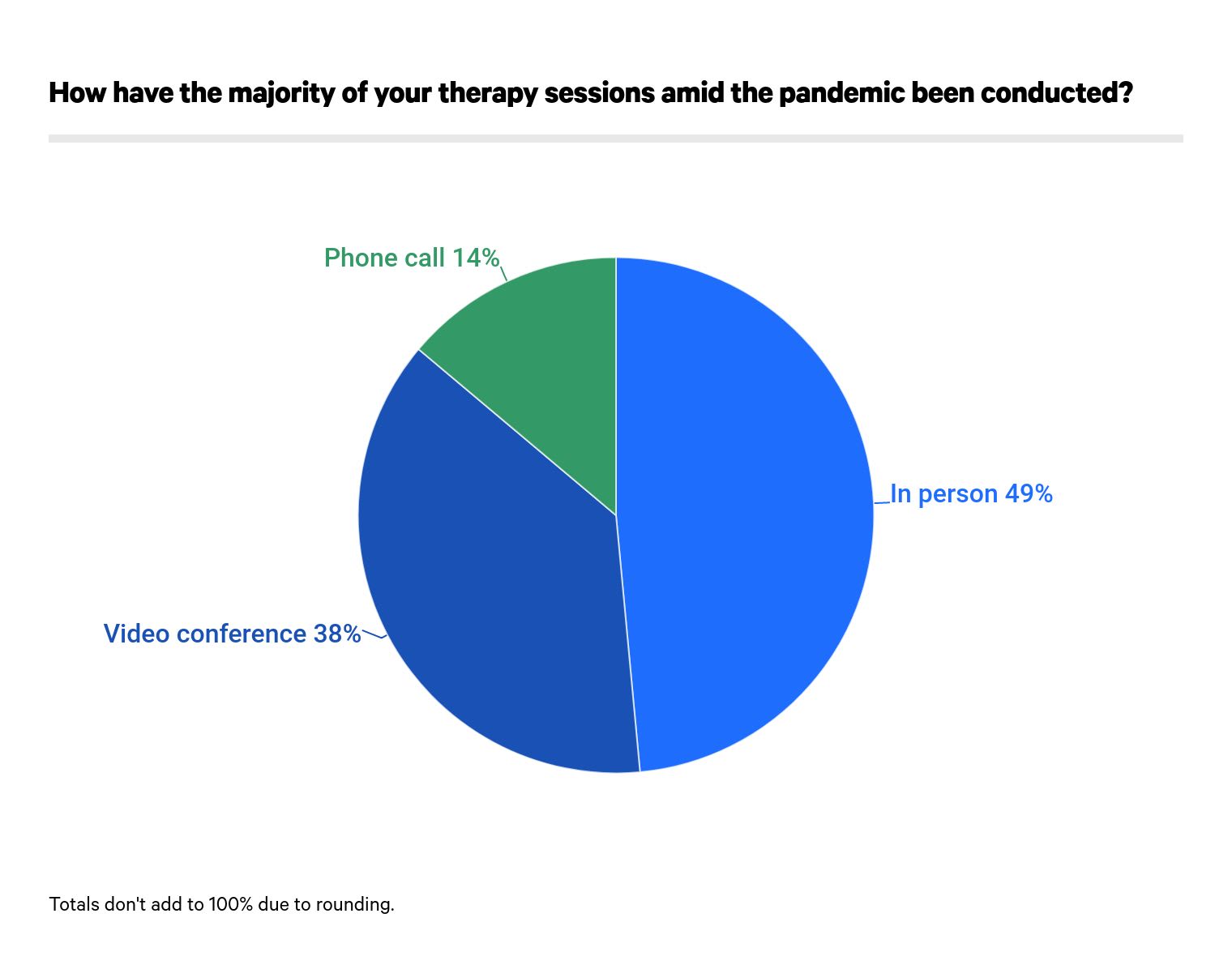
Unexpectedly, younger individuals — who are known to use technology more — didn’t engage with therapists more through phone or video. (Specifically, 57% of Gen Z respondents, which was more than 20 percentage points higher than that of baby boomers.)
Social media as a means of therapy
With technology also comes increased usage of social media and receiving mental health aid through these avenues. Although certified medical professionals aren’t always providing the help, many consumers are finding it helps their psyche.
The largest percentage of adults (29%) said they’ve been watching videos from therapists on either TikTok or YouTube to get help. Next were reading Reddit forums (9%) and following mental health resource accounts on Twitter (8%).
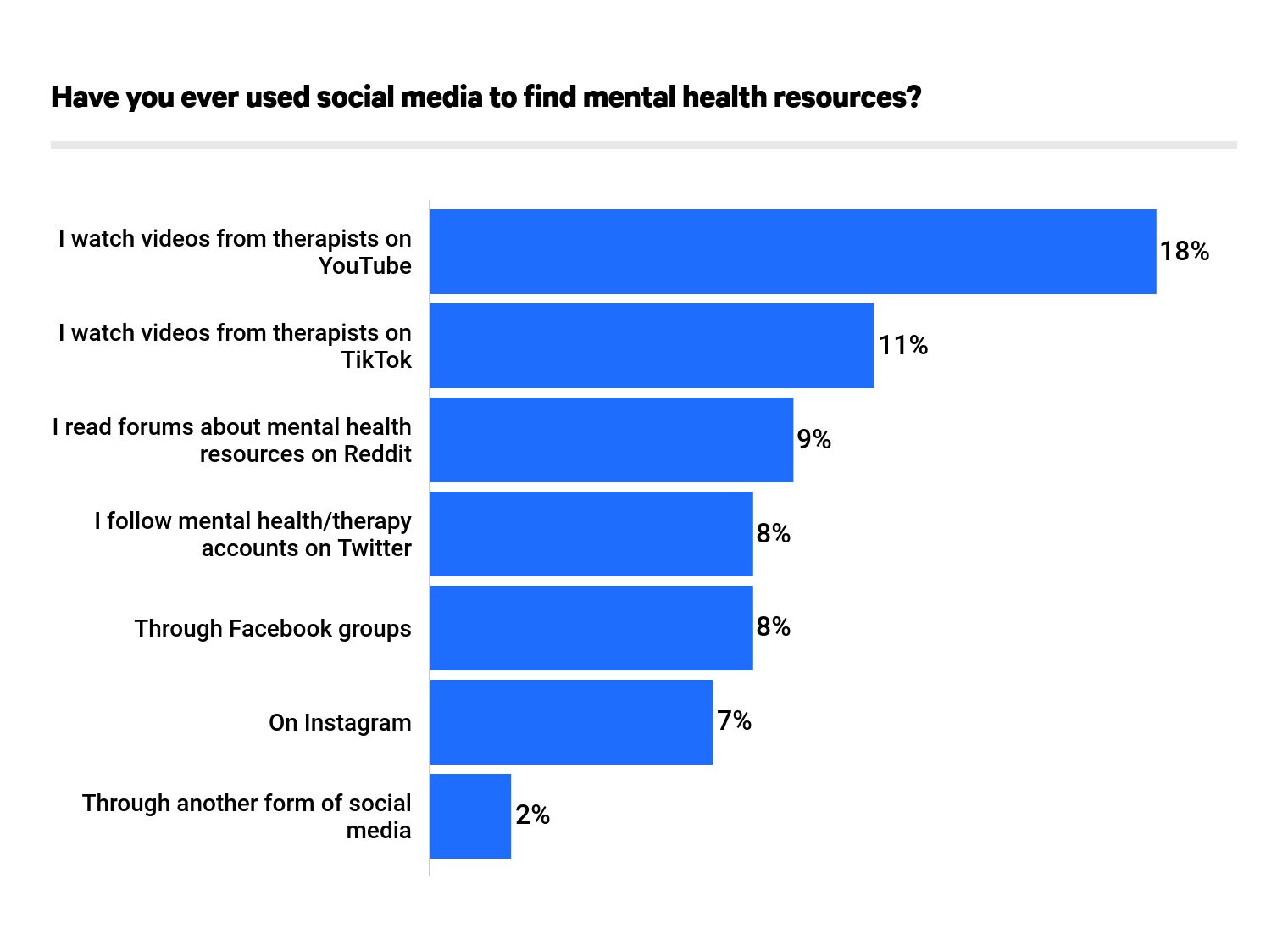
Outside of the social media landscape, there are also a variety of mindfulness apps that consumers are finding useful. In fact, 15% are using apps such as Calm during the pandemic. And 13% of adults are turning to counseling apps like Talkspace.
Although accessibility has increased, some individuals are still finding that paying for therapy or finding the right therapist can be a challenge
Not being able to afford copays was the biggest barrier preventing adults from getting therapy, according to our respondents.
The lack of financial ability to meet payments was exacerbated for individuals who lost income during the pandemic. For example, 22% of those who have been laid off or furloughed cited copay issues. Of those laid off or furloughed, another 14% said they couldn't find a good therapist that would accept their health insurance policy.
Additionally, many said they struggled to find the right therapist. This includes 1 in 4 adults who said they’ve paid out-of-pocket costs to see an out-of-network therapist instead of visiting one who would be covered by their current health insurance plan.
Even with these problems, there are some bright spots around therapy payments and coverage. In fact, 51% of respondents said their employer covers therapy resources in some way, including:
- Virtual counseling (17%)
- In-person counseling (13%)
- Assistance in covering counseling costs (9%)
- Other resources (4%)
Methodology
ValuePenguin commissioned Qualtrics to conduct an online survey of 1,320 U.S. consumers on Jan. 25 and 26, 2021. The survey was administered using a nonprobability-based sample, and quotas were used to ensure the sample base represented the overall population. All responses were reviewed by researchers for quality control.
We defined generations as the following ages in 2021:
- Generation Z: 18 to 24
- Millennial: 25 to 40
- Generation X: 41 to 55
- Baby boomer: 56 to 75
While the survey also included consumers from the silent generation (defined as those 76 and older), the sample size was too small to include findings related to that group in the generational breakdowns.
